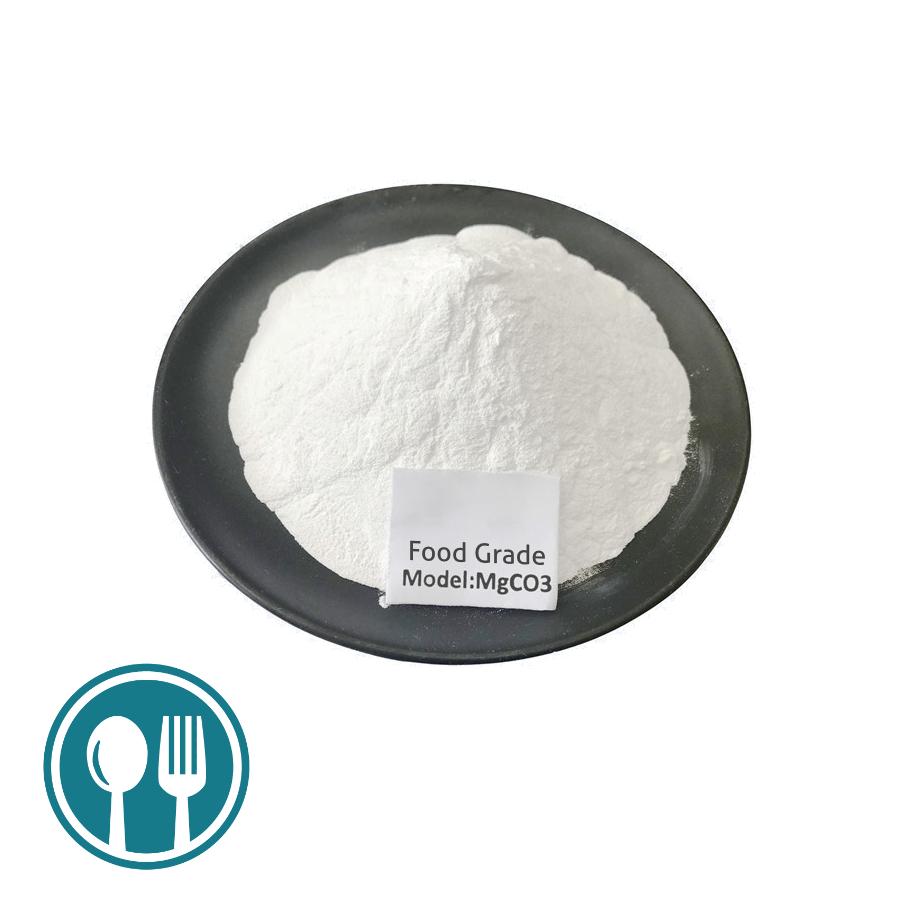Hebei Messi Biology Co., Ltd., Ltd. stated that the reagent grade magnesium carbonate is basic hydrated magnesium carbonate or normal hydrated magnesium carbonate. Due to the different conditions during crystallization, the products can be divided into light and heavy products. It is trihydrate salt at room temperature. Reagent grade magnesium carbonate is white monoclinic crystal with a relative density of 2.254. Slightly soluble in water, insoluble in ethanol, can be dissolved and foamed by dilute acid. It foams and decomposes in case of acid to release carbon dioxide, and is heated and calcined to generate magnesium oxide and carbon dioxide. Odorless. Relative density 2.2. The melting point is 350°C. Stable in air, almost insoluble in water, but causes a slight alkaline reaction in water.
Application of magnesium carbonate in food additives: acidity regulator (PH regulator); alkaline agent; desiccant; color protectant; anticaking agent; carrier; ; Nutritional supplements; PH regulators; processing aids; release agents; For the preparation of chemical leavening agents. Residues in food should be ≤0.5% (Japan). Add 0.1% to 0.3% to prevent salt agglomeration. It can also be used in industries such as toothpaste, medicine and cosmetics.
Magnesium carbonate preparation process
Method 1: Mix magnesite (MgCO3) with coke and roast to obtain magnesium oxide, add water to form a slurry, pass CO2 into it to obtain magnesium bicarbonate, filter, and heat the filtrate to obtain basic carbonate precipitation.
Method 2: Heat the dolomite with a small fire, only decompose the magnesium carbonate and then crush it, make it react with water and CO2 under 5 to 6 atmospheres, the magnesium oxide will become magnesium bicarbonate and dissolve, leaving calcium carbonate, after filtering, obtained by heating.
Method 3: Dissolve equal amounts of crystalline magnesium sulfate and crystalline sodium carbonate in 10 times the amount of water respectively, heat to 60 ℃ ~ 80 ℃ and mix thoroughly, and precipitate while generating CO2 gas. Filter out the precipitate, mix it with hot water at 70 ℃ ~ 80 ℃, filter again, precipitate, and dry at 50 ℃ ~ 60 ℃ after thorough washing.
Method 4: Prepare from brine after salt making. Add sulfuric acid to the brine, pass in hydrogen, heat to remove bromine, then add sodium carbonate, stir to make it react, at this time a basic magnesium carbonate precipitate is formed, filter, wash with water, and then dry at above 50°C, it can be Precipitated magnesium carbonate (magnesium carbonate heavy) is produced.

